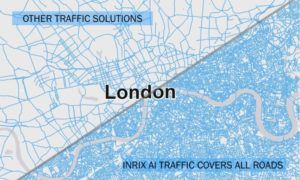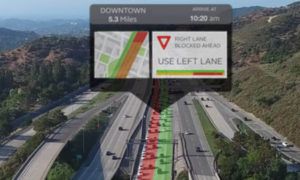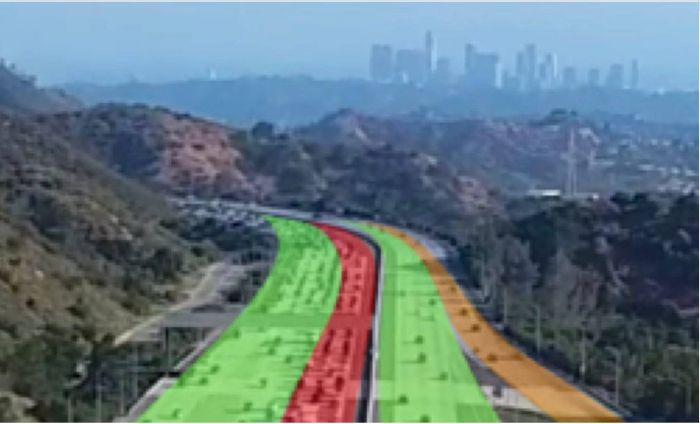To coincide with the ITS America Annual Meeting in Washington DC, one of the leaders in connected car services and transportation analytics, Inrix, just released the industry’s next-generation data system that uses artificial intelligence (AI) to deliver its most precise and actionable traffic information to date.
Inrix notes that when it comes to commuting, there are certain realities that drivers just accept: sudden stop-and-go traffic, surprise lane closures or estimated times of arrival (ETAs) that are based on ‘guestimates’. As well as drivers, transportation agencies also need timely, accurate traffic data to manage congestion, but many of the existing solutions fall short of their required levels of detail. Inrix’s new AI Traffic service has been developed to provide instantaneous updates to traffic conditions and pinpoint traffic speeds in different lanes to deliver accurate ETAs on every roadway around the world.
Through the use of deep learning technologies, Inrix says the new AI Traffic service will allow: drivers to get to their destinations faster and with less stress; businesses to make smarter decisions; and road authorities to gain the knowledge they need to promote public safety and future-proof their roadways. The main features of AI Traffic are:
- More accurate ETAs – ensuring drivers will arrive at their destination on-time, and not a minute later;
- Instant updates to get drivers there fast and safe – updates road conditions instantaneously, from roadwork to accidents to everyday congestion, keeping road authorities and drivers one-step-ahead of the real-time situation;
- Lane-by-lane precision – information that is precise enough to pinpoint the speed of traffic in different lanes, helping drivers and road authorities make better decisions;
- Covers all roads – the service has the ability to calculate speeds for every road in the world, from interstates to intersections, country roads to neighborhoods.
 Inrix’s AI Traffic service is powered by a new geospatial engine that uses deep learning to provide increasingly better and more accurate traffic analytics. The engine was trained on trillions of data points collected over a decade, including information from connected cars, mobile phones, weather, historical traffic, incidents and other sources. Combing historical insights with real-time data, AI Traffic can identify traffic conditions with the highest level of precision for every type of complex situation. The new processing engine also reduces latency, which means it can ingest, process and output data faster than ever before, with its AI software continually learning, so accuracy improves over time.
Inrix’s AI Traffic service is powered by a new geospatial engine that uses deep learning to provide increasingly better and more accurate traffic analytics. The engine was trained on trillions of data points collected over a decade, including information from connected cars, mobile phones, weather, historical traffic, incidents and other sources. Combing historical insights with real-time data, AI Traffic can identify traffic conditions with the highest level of precision for every type of complex situation. The new processing engine also reduces latency, which means it can ingest, process and output data faster than ever before, with its AI software continually learning, so accuracy improves over time.
Inrix has a long history of pioneering smart mobility analytics, as it was the first company to launch a crowd-sourced traffic network, the first provider of a map agonistic traffic system with unrivaled granularity and coverage, and now becomes the first with a traffic service that has been built from the ground up on AI and deep learning processing, with the potential to improve worldwide transportation.
“AI seems like an intangible technology, but we are taking advantage of its endless capabilities to improve transportation around the world,” said Mark Daymond, chief technology officer at Inrix. “By radically enhancing precision, timeliness, detail and coverage, our AI Traffic service is an evolution in traffic intelligence for connected cars and smart cities.”





